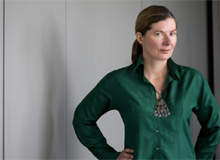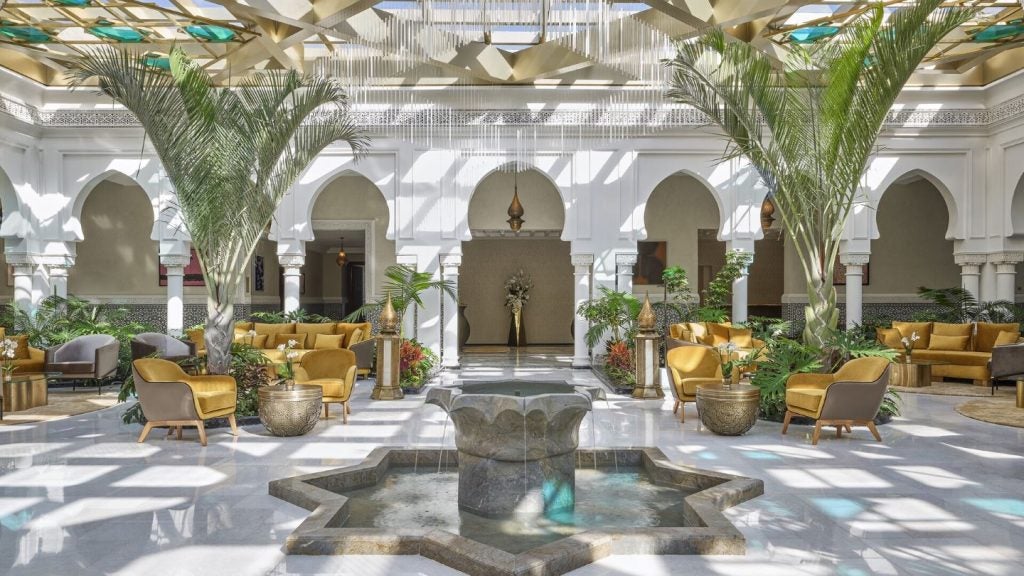
Ilse Crawford has created some of the most original interiors of the last decade. The founder of Elle Decoration and launch editor of Bare Magazine has been behind projects such as Soho House New York, Babington House hotel in Somerset and most recently the Grand Hotel Stockholm, which featured restored furniture from the hotel’s early years, along with some carefully designed pieces. As the principal of Studioilse, she is currently working on a wellbeing retreat in Coligny, France, and is also the department head of man and wellbeing at the Design Academy Eindhoven.
CK: How would you define contemporary living today?
IC: There are a growing number of people who see their home and its design as part of their identity, which is quite an old fashioned way of looking at it. I think playing with the property market affected people’s attitudes towards their homes; they just saw them as short-term places to invest in. I think we are going back to seeing the home as the base for our lives. People are more inclined to work on layering a place as opposed to constantly hopping about.
What are you working on at the moment?
The Well Being destination in Coligny, France, will not be like other wellbeing destinations. We are very much going to use the landscape and the idea of the human being in nature as our starting point, much like the Kranzbach hotel and wellness retreat in Germany.
Do you prefer working on smaller scale projects?
How well do you really know your competitors?
Access the most comprehensive Company Profiles on the market, powered by GlobalData. Save hours of research. Gain competitive edge.

Thank you!
Your download email will arrive shortly
Not ready to buy yet? Download a free sample
We are confident about the unique quality of our Company Profiles. However, we want you to make the most beneficial decision for your business, so we offer a free sample that you can download by submitting the below form
By GlobalDataI treat all projects as small projects. Paul Smith is a bit of a hero of mine in that way. What’s so interesting about Paul, quite apart from his aesthetic, is that he makes a big business seem small. And I think that’s a very good way of looking at the world. Having said that, I am very interested in working on big projects. The new wellbeing hotel is on 150 hectares in the south of France. It’s a big project but we will approach it from the point of view of the individual, because it is the individual who will move through that space.
How do you realise the design desires of individuals?
That is something that gets tricky once a project becomes successful and attracts a new group of people. I don’t really believe in targeting one specific group; I tend to think much more in terms of the context because that particular group will inevitably change. However, if you start with the context, you’ll design a place that is far more flexible and inclusive. A project like Soho House was created for a very specific group of people, who then grew up. The inn projects, like The Olde Bell Inn in Hurley, are different because they are aimed at a much more diverse type of person.
Do you feel you created the concept of the designer country house hotel?
I didn’t see Babington House like that. I saw it as a house in the country and then thought about the people, who were at the time the Soho House crowd, who would certainly not go to a country house hotel. They would go and stay at the home of a friend where the parents had gone away and left the keys to the drinks cabinet. The idea of it being a country house hotel at the time was nuts. What was needed was a country house you could go and stay at without any responsibility. I think it has kept some of that atmosphere but, funnily enough, it has become a bit more like a country house hotel now.
How important is the idea of home in designing a hotel?
A hotel is never going to be home and if you try to make it look like one then it is bound to fail, because it obviously isn’t. If you can make a hotel work in terms of rituals, rhythms and routines and try and work out ways that it can really address things that people do when they go to a room to sleep, then I think that is when it starts to get interesting.
Before aesthetics, what’s important are the rituals, rhythms and routines played out within a hotel. If you have a strong concept that is followed through in the way a place is experienced and lived then you can create a place to call a home, not necessarily your home. The dynamics make it human and real, and allow it to evolve. The look on its own is slightly irrelevant. A hotel can’t just look like a home, but still be run like a traditional hotel. That misses the point, and it will have a shelf life, as it’s lacking substance and is static. For example, Babington House spawned a generation of imitators, who copied the look, without understanding that it was the content and rituals of the place in connection with the look that give it life and longevity. The key factor is that it’s a house that is lived, and therefore loved.
What do you want your furnishings to bring to an interior such as the Matbaren food bar and Matsalen dining room in Stockholm’s Grand Hotel, completed in 2007?
Design is a three-dimensional language. The furniture has to do whatever the brief sets itself. In the case of Grand Hotel Stockholm, it was about having a Scandinavian view of the world that felt homely but wasn’t completely rigid and had to reflect Mathias Dahlgren’s menu that was 70% Scandinavian, 30% international.
In the Matbaren, the food bar, which is a quicker eating experience, and the Matsalen, the slower, more sensual restaurant, we have made two spaces that can be smelt, heard and felt in very different ways.
In the dining room we wanted it to be a bit more like a Swedish sitting room, a bit more formal but comfortable as you have to stay there for hours and hours. From an individual’s perspective, it was all about creating a sensual, extended experience of food and time with another person. It was like home in the way we put things together and in the materiality we chose from the light to the wooden panelling.
Light in particular plays such a big part in Scandinavian life as they live so much of their year in darkness and light is such an important part of defining an area.
What does home mean to you?
Home is both a place and a state of mind. It is a place where you can fully be yourself. You have to put a lot of energy into urban life so it’s great to get to a place where that is not necessary.
I see home as not just a place to get away from the world but also a place where you can engage with the world. It’s a space where you can spend time, think, plan, build, scheme and dream. It’s your corner of the universe. Home is the physical embodiment of your personal rituals. I have always been fascinated by the idea of homecoming. It is so primal. Every animal has a home. It’s very, very
basic and every animal has their way with their home. It is far more about life than it is about the artefact.
Home is now the only really stable part of our lives. Even a job for the next year cannot be guaranteed. There are few things we value that we can control as much.







